UK: Smoky Spurge Hawkmoth, F: Deiléphile de Dahl; Sphinx de Dahl, D: Sardinischer Wolfsmilchschwärmer, I: sfinge dell'euforbia sarda.
Sphinx dahlii Geyer, [1828], in Hübner, Samml. eur. Schmett., Sphingidae: pl. 36, figs 161--164.Type locality: Cagliari, Sardenia [Sardinia].
(Taxonomic notes. (i) Subsp. balearica (Rebel, 1926) is probably not tenable. Rebel described it from one specimen from Mallorca, thinking it represented an isolated form; however, most specimens from there cannot be distinguished from those from Corsica and Sardinia. This is in agreement with the findings of Meerman (1993). However, judging by the photo below (from s'Albufera des Grau) the population of Hyles dahlii on Menorca may contain a trace of Hyles euphorbiae (Linnaeus, 1758).
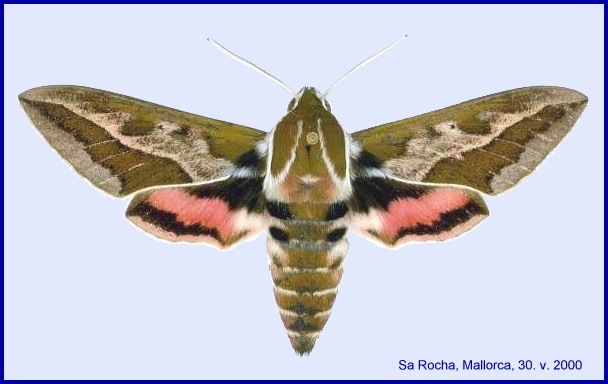
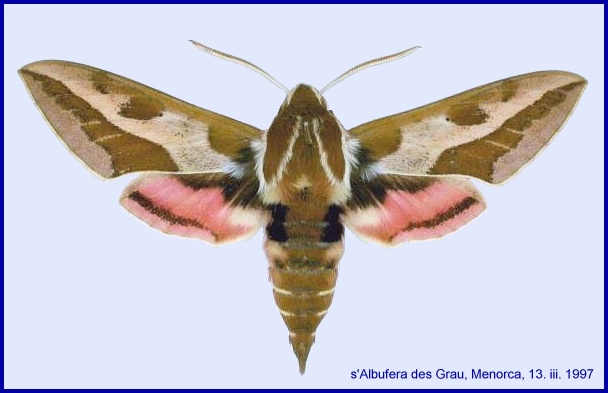
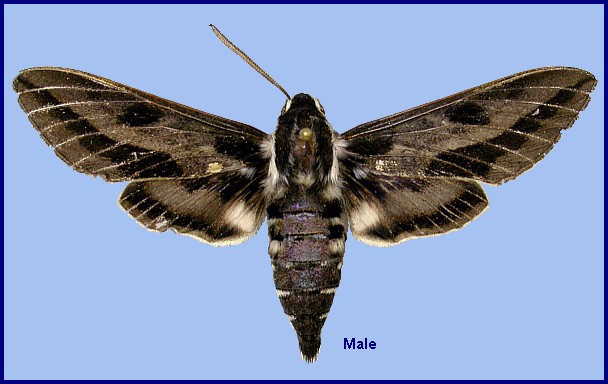
(ii) The findings of Meerman (1993) also indicate that Hyles dahlii and Hyles tithymali (Boisduval, 1834) may share a common ancestry and that Hyles dahlii evolved in isolation on Corsica and Sardinia. A near identical course of evolution appears to have been followed by the butterfly Papilio hospiton Géné, 1839, which appears to have evolved from an isolated population of the North African Papilio saharae Oberthür, 1879 (Pittaway et al., 1994).)
[Further details on this species, as well as photos of all stages, can be found on Lepiforum.]
Holarctic; western Palaearctic region. Pleistocene refuge: Monocentric -- the Tyrrhenian subsection of the Mediterranean refuge, from whence it appears to have colonized the Balearic Islands.
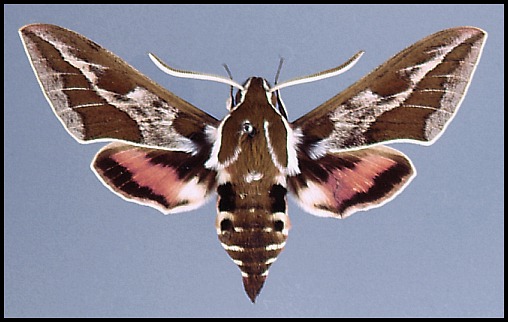
Wingspan: 65--85mm. Superficially similar to a dark, heavily blotched Hyles tithymali tithymali; not very variable, although some individuals can have all red colour on their hindwings replaced by yellow. A characteristic feature of this species is the presence of three black dots down each side of the abdomen; all related Hyles species in the area have two.
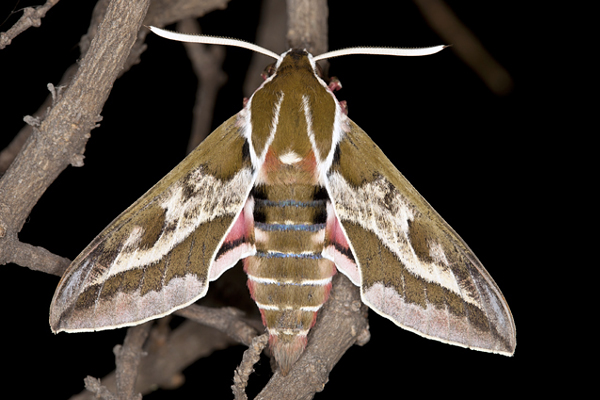
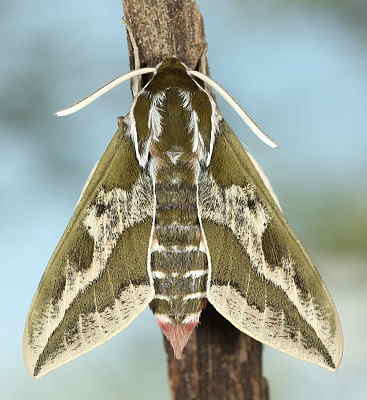
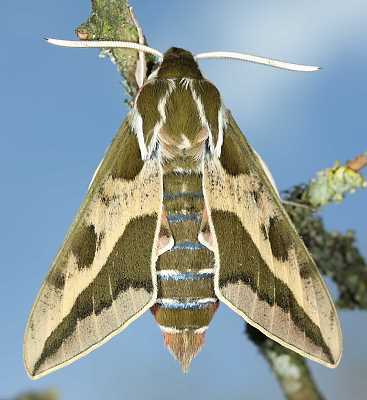
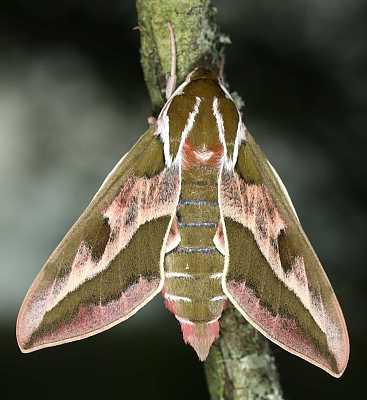
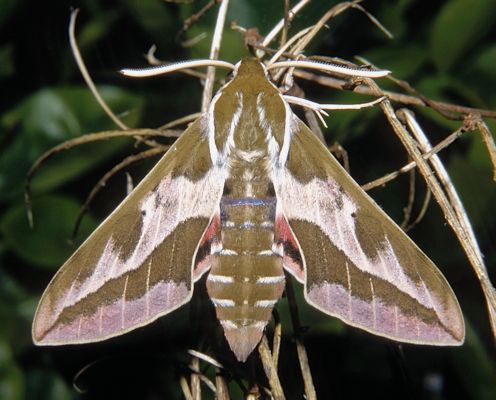
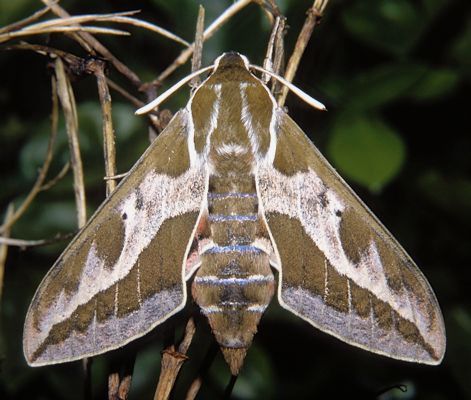
A species of rocky mountainsides and sand-dunes scattered with shrubs and pine trees.
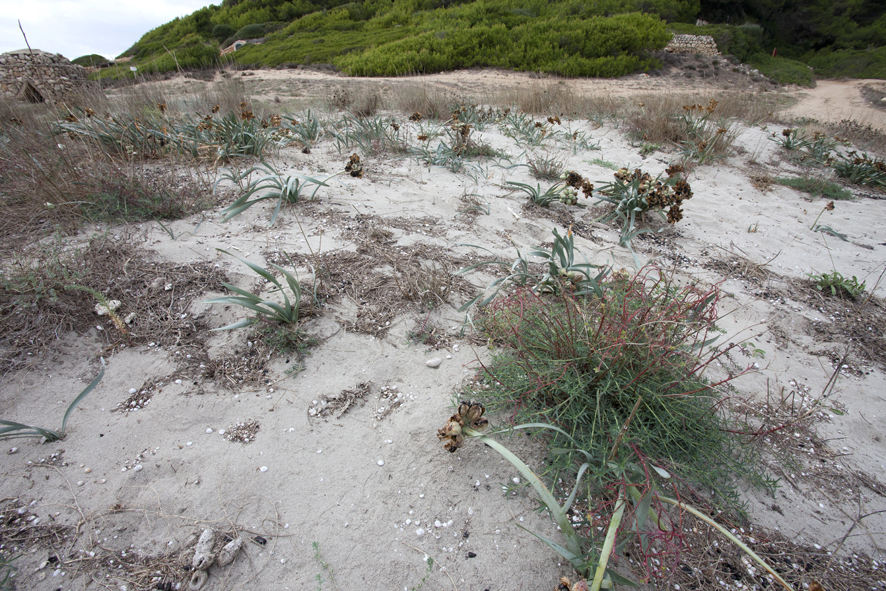
May/June and August/September, in two broods, with a partial third in warm years.
OVUM: As Hyles euphorbiae.
LARVA: 100mm.
On hatching, the 3--4mm-long larva is off-white, but becomes black with feeding, and remains black in general colour. Thereafter, during the second, third and fourth instar stages the general colouration on the upper dorsal and ventral areas of each segment of the body is black or deep green with many minute white speckled spots all over the upper area of the segments. Within the upper ventral areas of each segment there are, however, two large irregular creamy-white spots lying within a black velvet patch. There is also a distinctive orange dorsal stripe along the full length of the body and a yellowish ventral stripe containing deepened orange patches in each segment on each side of the body. The underside area of each segment appear to be universally greenish with small irregular white spots of similar character as those displayed on the upper parts of the body. The prolegs are universally orange and the forelegs are coral pink. The horn on the anal segment is also orange for approximately two-thirds of its length and the remainder iss black. As a striking constrast the head and a cervical shield on the upper side of the first segment below the head are deep coral pink. Inspite of this appearance, the larvae appeared to blend well with their habitat and only the pink head and cervical shield as well as the orange dorsal stripe appeared to be at odds with the general colouration displayed. Ventral surface universally pale cream with a slight translucent greenish shade present, with small irregular white spots (Gossling, 1979).
Fully grown it is dark grey with a profusion of small, whitish spots; head usually pink and horn orange. Instead of a solid dorso-lateral line, there are two oval, white eye-spots set in a velvet-black patch on each segment. Narrow orange dorsal line; laterally, a red and yellow chequered line runs below the white spiracles. Ventral surface now yellowish.
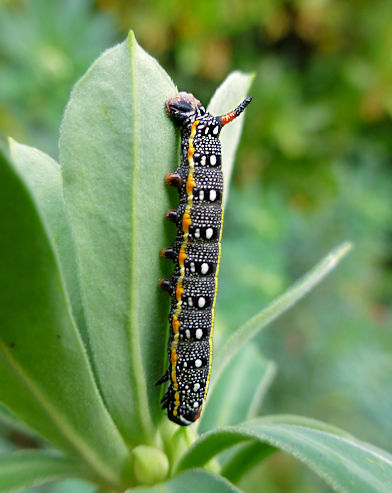
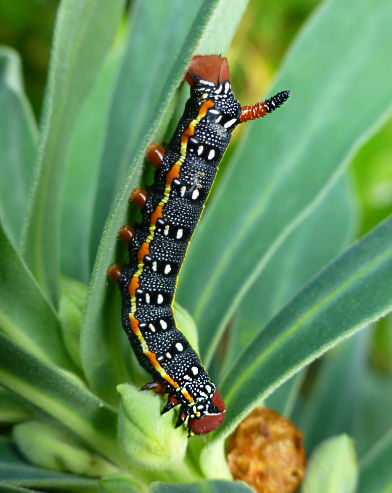
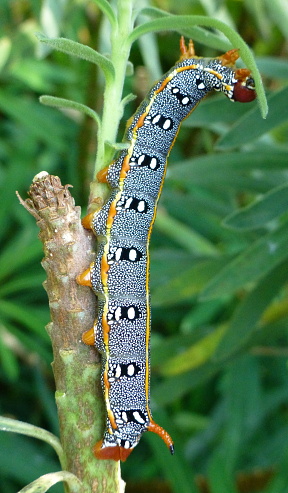
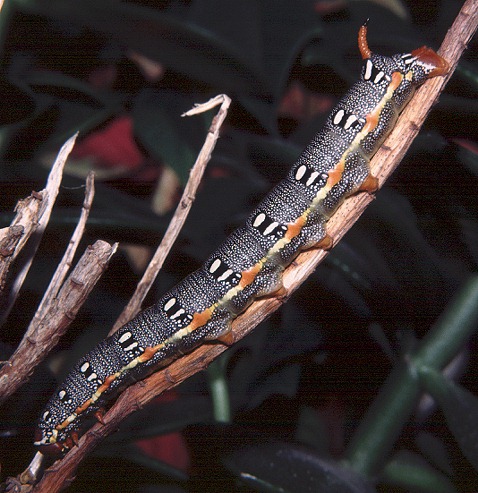
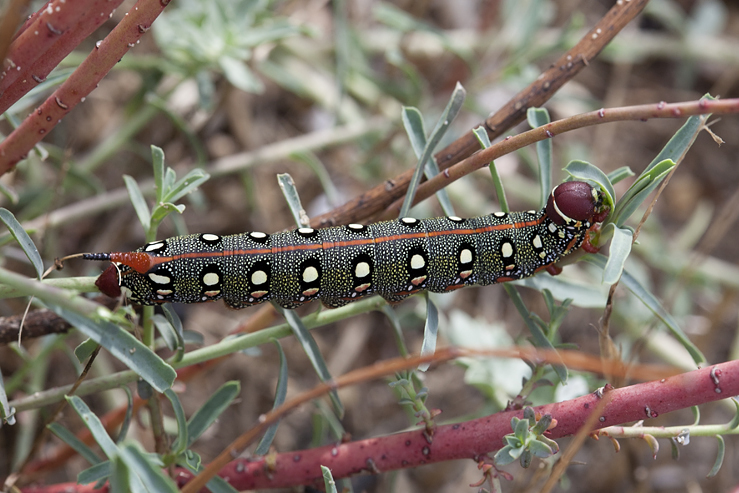
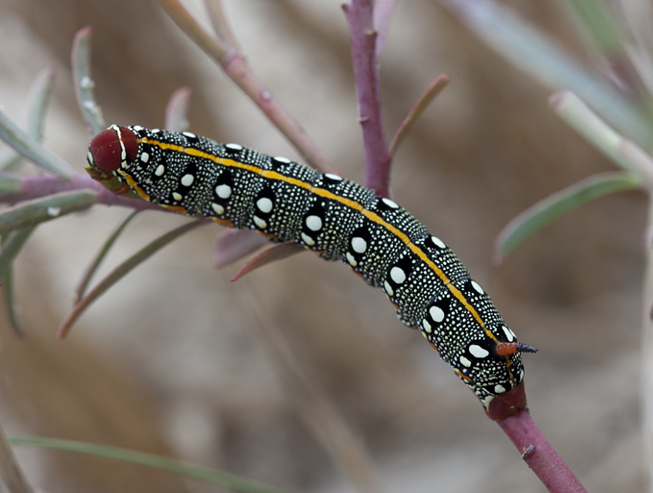
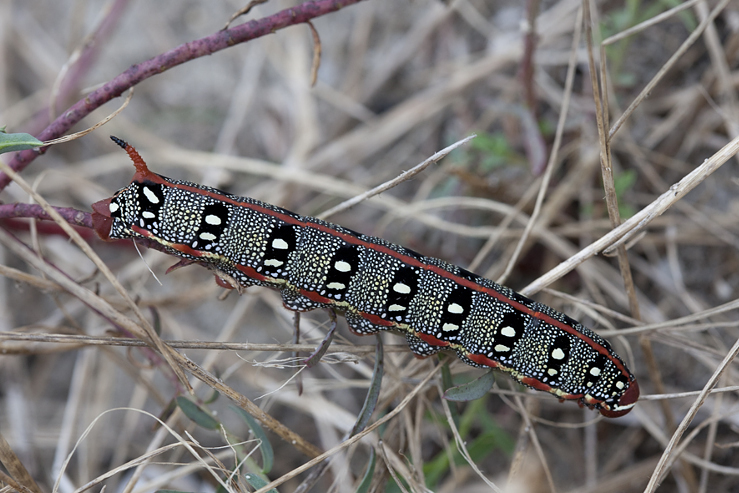
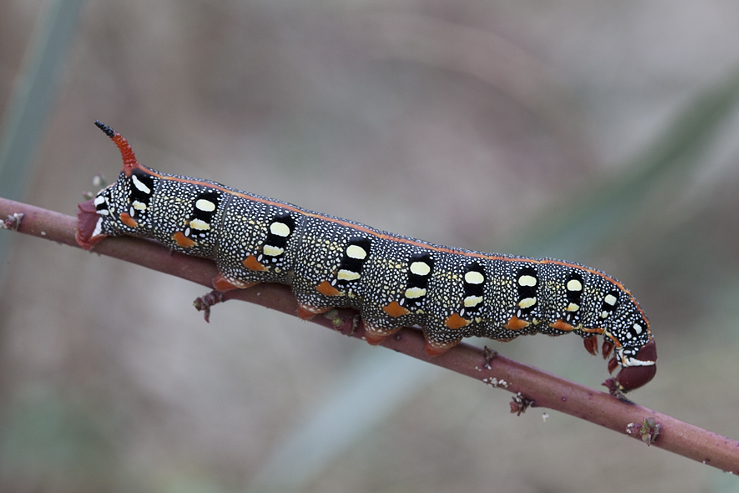
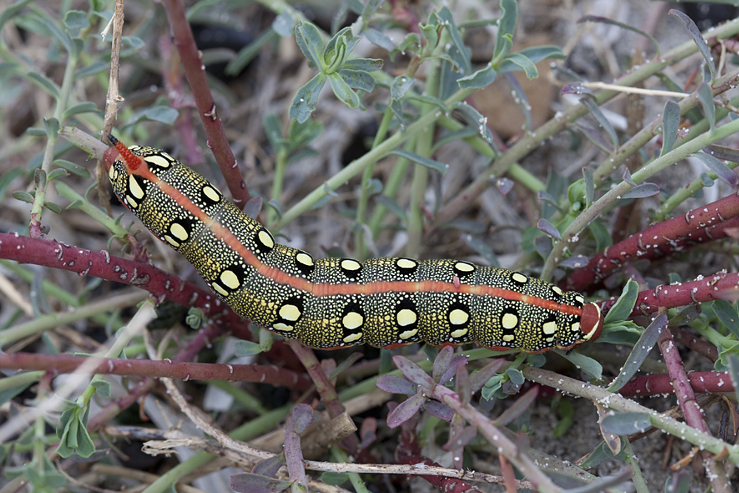
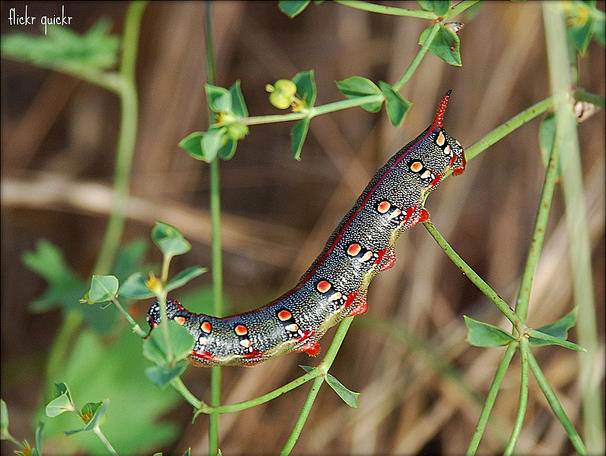
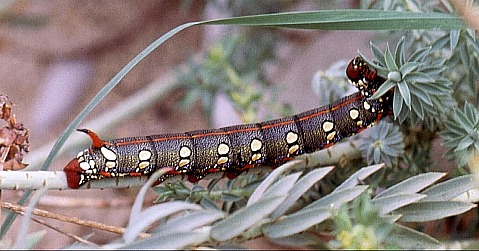
Occurs from June to October.
Hostplants. Herbaceous Euphorbia spp., especially Euphorbia paralias, Euphorbia myrsinites (Roueast, 1883), Euphorbia characias, Euphorbia dendroides, Euphorbia pityusa, Euphorbia pinea and Euphorbia terracina.
PUPA: Very similar in appearance to that of Hyles euphorbiae. Overwinters as a pupa.
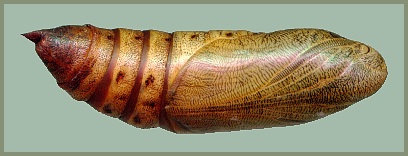
Tachinidae: Exorista larvarum (Linnaeus, 1758), Masicera sphingivora (Robineau-Desvoidy, 1830).
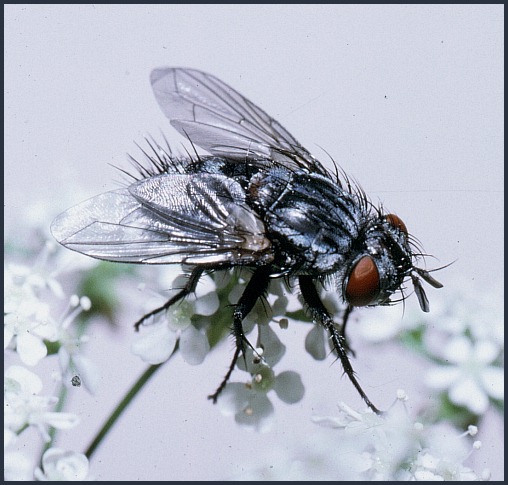
Corsica, Sardinia (Gossling, 1979) and the Balearic Island of Mallorca (Rebel, 1934). Considered to be restricted to these islands, although there are occasional reports of its occurrence in Sicily. In October 1975, several larvae of this distinctive species were also found on the Catalan coast, north-east Spain (Masó i Planas et al., 1979). Recorded in 1998 from the island of Pianosa off the Tuscan coast, Italy (Dapporto et al., 1999).
Recently reported from Tunisia, where individuals were deliberately released in the mid 1980's (Hundsdörfer, 2004).
Extra-limital range. None.
 Return to species list
Return to species list